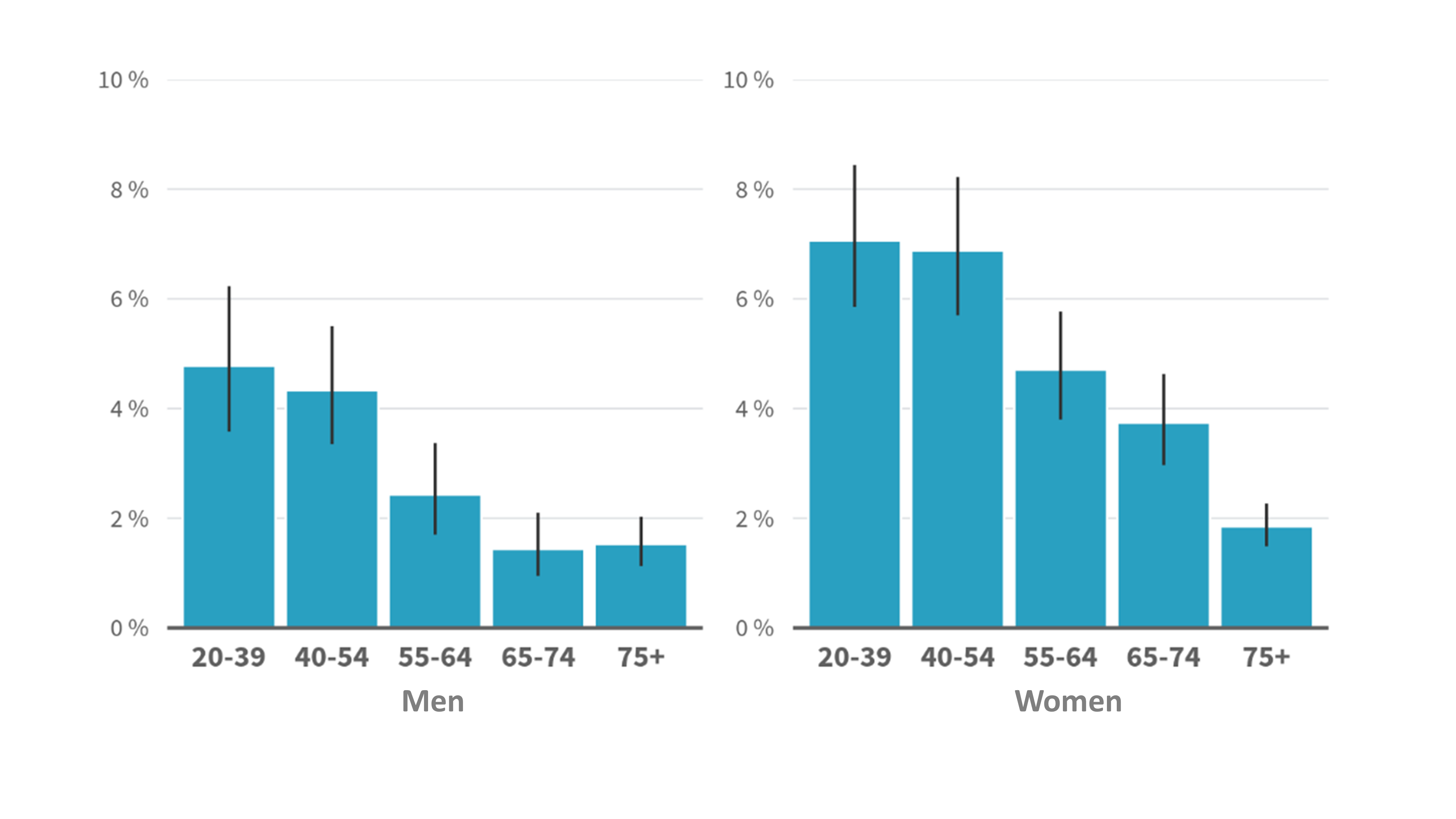Healthy Finland survey: Women in particular experience emotional abuse as a form of domestic violence
Young and middle-aged women experience emotional abuse and physical domestic and intimate partner violence more often than others.
2.0% of women and 1.2% of men had experienced physical intimate partner violence in the past year. Women aged 20–39 reported the most physical intimate partner violence: 3.2% of them had experienced physical violence in their relationship.
The information is available in the Healthy Finland study, which examined the forms of violence and their prevalence in intimate relationships and other interpersonal relationships. In connection with the Healthy Finland study, the Finnish Institute for Health and Welfare investigated the prevalence of emotional abuse for the first time, physical violence has been studied previously.
The Healthy Finland study included three forms of emotional abuse:
- threatening physical harm
- calling names for the purpose of discouraging or humiliating
- coercive control, such as restricting or trying to restrict a person from contacting others (e.g. family, relatives and friends).
5.3% of women and 3.4% of men had experienced at least one of the forms of emotional abuse included in the survey in their relationship during the past year. Young and middle-aged women reported the most emotional abuse (about 6-8%).
The most common reported form of abuse was name calling for the purpose of discouraging or humiliating. The second most common topic was the restriction of contact with people such as family members, relatives and friends.

Figure 1: Experiences of emotional abuse in intimate relationships by gender and age group.
Identifying emotional abuse is difficult and the consequences are serious
Emotional abuse is often more difficult to identify than physical abuse. Coercive control is a form of emotional abuse that is particularly serious and harmful.
“Coercive control is the damaging use of power, where one person restricts another’s right to self-determination. These restrictions may be related to such things as their freedom to contact relatives and friends, to work or study, to use email and social media accounts, or their freedom of movement. According to studies, coercive control can cause post-traumatic stress symptoms and social isolation and reduce a person’s likelihood to seek help", says Senior Researcher Johanna Hietamäki.
According to previous studies, controlling behaviour is experienced more when domestic violence has continued for a longer period of time.
The current Government Programme states that the need for criminalisation of coercive control will be investigated. Internationally, this has been done in countries such as England.
Work to prevent domestic violence must be multidisciplinary
Domestic violence is and must continue to be addressed in many different ways.
"It is extremely important to bring anti-violence work into the structures of the wellbeing services counties. At the moment, almost all wellbeing services counties have a designated coordinator for work to prevent violence. It is important to support this work. They educate wellbeing services county professionals on domestic violence and encourage them to systematically ask questions about experiences of domestic violence in social and health care services," says Hietamäki.
"In addition, professionals are offered support in identifying violence and asking questions about violence in THL's online courses, which are open and free of charge.”
Many types of support available for those who have experienced violence
Anyone can call Nollalinja helpline (tel. 080 005 005) anonymously and free of charge at any time of the day or night. The Nollalinja chat service is open on weekdays from 9 am to 3 pm (nollalinja.fi). Nollalinja's professionals in violence and crisis work can provide help in 11 different languages.
Shelters are intended for everyone who has experienced domestic violence or the threat thereof. Shelters are free of charge and open 24 hours a day.
Many organisations also provide services for those who have experienced domestic violence. You can ask for help from the Federation of Mother and Child Homes and Shelters' Online Shelter, the Women's Line, the Crisis Centre Monika, the Rape Crisis Centre Tukinainen and the Miehen Linja at Lyömätön Linja.
Source:
Experiences of violence, online report, Results of the Healthy Finland survey (in Finnish)
Further information:
Johanna Hietamäki
Senior Researcher
Finnish Institute for Health and Welfare
tel. +358 29 524 7990
[email protected]
- Healthy Finland Survey
- Results of the Healthy Finland survey
- Finnish Institute for Health and Welfare web pages on violence (in Finnish)
- Finnish Institute for Health and Welfare online courses on violence and abuse



